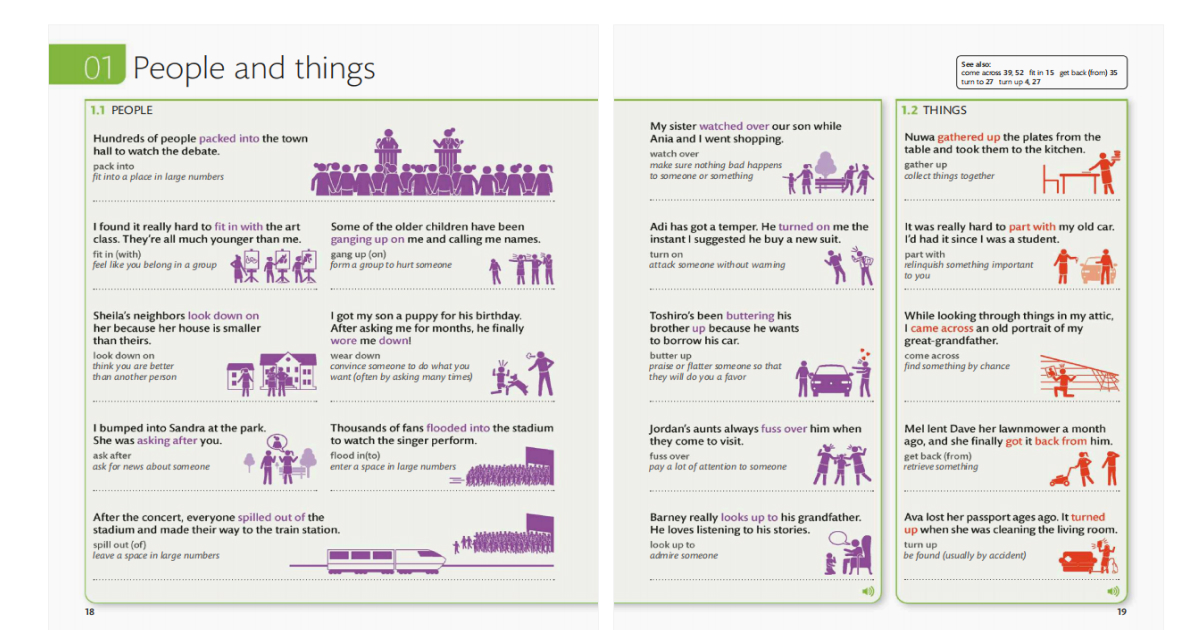Best podcasts and YouTube channels for English teachers
- Listening
- Teaching qualifications
- Activities
- Tips & Strategies
- Methodology

15.09.2023
It’s hard to find a less hated topic than phrasal verbs. Students often say that they look the same, are hard to understand, and easy to confuse with the phrasal verbs that have completely different meanings! Plus, they can’t be translated literally.
How should we, as professionals, deal with such a difficult topic, though? Are there any ways to make studying phrasal verbs less challenging?
Let’s see.

Take your teaching career to the next level
Get ahead of the game with usThe main reason why teaching phrasal verbs may seem so complicated is the usage of the wrong approaches.
There are some common mistakes that a lot of educators tend to make while working with phrasal verbs:
All of these problems may have a great impact on your students’ progress in studying and using phrasal verbs.
Let’s look at what we can do to avoid these teaching mistakes.
Dos and Don'ts of ESL teaching
First of all, group your phrasal verbs correctly.
Don’t make a huge list of the most common phrasal verbs.
Such lists only overwhelm your students.
Don’t group phrasal verbs according to the main verb.
It’s not productive because the only thing that all these phrases have in common is the first word, not the meaning, which makes the process of remembering even more confusing.
Don’t group the phrasal verbs according to the common preposition.
It’s true that this approach seems much more reasonable and may even turn out to be effective. However, it’s still not the best way to learn phrasal verbs.
You can group the phrasal verbs according to their meanings, for example, like it is done in the book by Thomas Booth and Ben Ffrancon Davies called “English for Everyone: English Phrasal Verbs”.
Here, all the most common phrasal verbs are grouped according to their meaning and the topic they belong to.
By grouping phrasal verbs in this way you make your students associate such lexical chunks with their meaning first and foremost.

Thomas Booth and Ben Ffrancon Davies. English for Everyone: English Phrasal Verbs
While correct grouping really matters, using context is crucial.
A lot of professionals treat phrasal verbs as something extraordinary and separate phrasal verbs from the rest of the vocabulary and functional language. It is understandable from a formal point of view. However, is that really the right way to teach phrasal verbs?
That is true, that phrasal verbs might be complicated to handle, and it is important to pay extra attention to the form.
But in most cases such a special attitude only makes students think of phrasal verbs as something absolutely unmanageable.
Including phrasal verbs into appropriate context, adding them to the target language on the topic and treating them as any other piece of vocabulary really makes the task of dealing with phrasal verbs much easier both for students and for teachers.
Tools to prepare for your lessons
It is extremely fun and effective to use visual aids while teaching phrasal verbs.
Flashcards, presentations, quizzes, and matching games are all beyond being beneficial to remember phrasal verbs.
Don’t underestimate using popular TV shows , movies, songs and other authentic materials to explain phrasal verbs!
Firstly, it is fun because you can choose the most beloved or trendy series.
Secondly, it is effective as it provides the students with a comprehensive example of how and in what context the phrasal verb is used.
Also, it is memorable because real stories and characters help us to really remember the phrase in context, and this is something that simple textbook examples may fail to do.
You can use authentic materials to illustrate the meaning of the phrasal verb, like it is done here:
Moreover, you may ask your students to guess the meaning of the phrasal verbs from the context presented through the movie’s or TV show’s extract, or even ask students to fill in the gaps in the famous movie lines with the correct phrasal verb.
Here are some ideas:
Finally, you may organize a Scavenger Hunt with the help of a famous TV-show episode.
Assign your students to watch the episode/ extract and write down as many phrasal verbs as they can. Ask to discuss their meanings after. It usually turns out to be fun and competitive.
Use authentic materials effectively!
Last but not least, give your students a chance to practice as much as possible, come back to the same phrases over and over again from time to time and revise them.
Phrasal verbs require consistent usage and frequent repetition in order to be remembered, so create a certain routine of repeating them and encouraging your students to actively use them.

To sum up, as you can see, teaching phrasal verbs may be fun and engaging rather than unbearably challenging. It only takes the right approach and a bit of creativity. What about you? Do you have any tips on how to teach phrasal verbs effectively? Let us know in the comments!
It is not that important to group the phrasal verbs in a certain way while teaching/ studying them.
Using visual aids has been proved to be very effective when it comes to teaching phrasal verbs.
Arina Kravchenko
Author
Teacher of General English & IELTS
Comments
Leave your comment